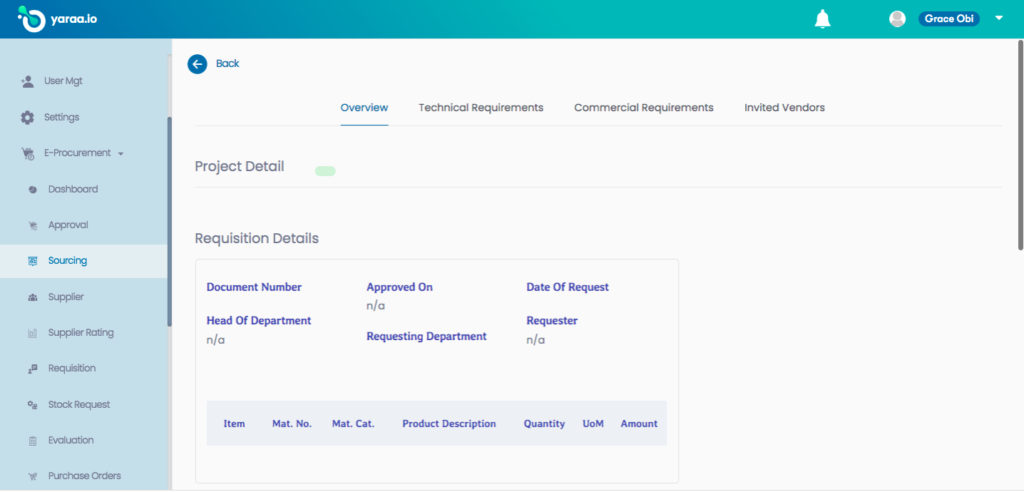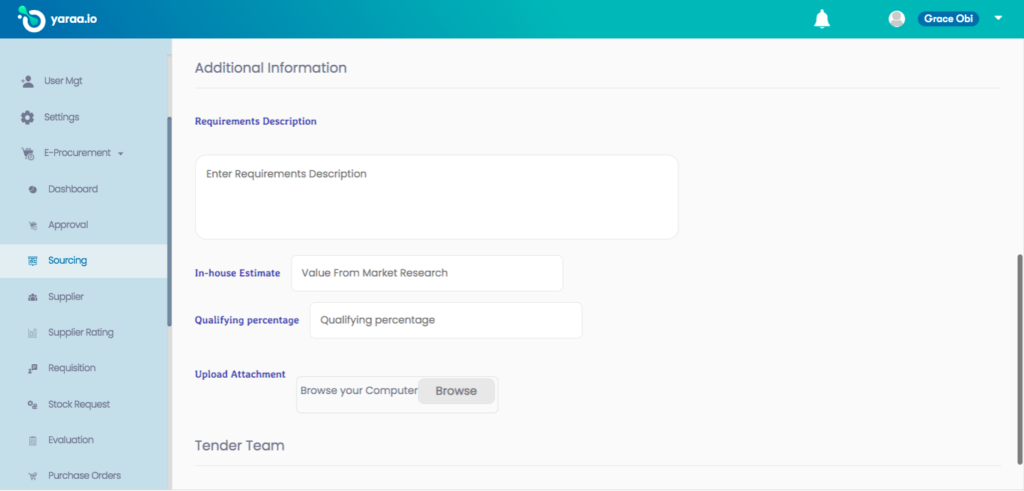Supported by the right tech tools and practices, strategic sourcing can help with essential procurement process optimization, make sourcing decisions that ensure your company’s needs are met, and develop a strong and diversified supplier base for your company. And in doing so, you’ll protect your company against risk and give it the ability it needs to navigate economic and supply chain disruptions to emerge strong, and profitable.

What Is Strategic Sourcing?
Strategic sourcing is a process that an organization uses to find the most cost-effective supplier for its products and services. It is also used to ensure that the company has a competitive edge in supply chains.
Strategic sourcing can be done in many different ways according to the company’s needs. It includes outsourcing, partnering, or even developing their supply chain. The most important thing about strategic sourcing is that it allows companies to focus on their core competencies instead of worrying about the production and distribution of goods.
There are many benefits to strategic sourcing, but it is important to keep in mind that not all suppliers will be able to meet your needs.
A sourcing strategy is important for any organization because it helps them decide on the type of supplier they want to work with and the amount of risk they are willing to take.
Also Read: HOW TO MANAGE YOUR ORGANIZATION’S BUDGET USING THE BEST BUDGET MANAGEMENT SOLUTIONS
Steps A Typical Strategic Sourcing Process Generally Follows:
- Supply Chain Assessment: Detailed spend analysis, evaluation, and cataloging of all the products and materials used by the business (both directly, in the form of raw materials, and indirectly, such as office supplies), and recording all suppliers, workflows, teams, and departments involved in the procure-to-pay (P2P) process is performed by the procurement department in this step.
- Strategic Development: A sourcing strategy is crafted by the company to fit its specific business goals. These business goals are for value creation, supplier relationships, etc. Contingency plans along with key performance indicators (KPIs) for internal process efficiency, vendor performance, etc are developed.
- Supplier Analysis: The current supplier market and earmarks criteria for suppliers that meet the needs established above (step 2) are analyzed by the company and create a portfolio of current and potential suppliers.
- Supplier Onboarding: Suppliers chosen are onboarded and integrated into P2P workflows, whether via formalized contractual agreements or outsourcing.
- Document Development: Templates for crucial documents such as supplier onboarding agreements, purchase orders, request for information (RFI), request for proposal (RFP), and Request for Quotation (RFQ) are created by the company.
- Contract Negotiations: Approved vendors are connected with the company to negotiate optimal terms and conditions.
- Ongoing Performance Management: The KPIs are closely monitored and are used to adjust the company’s sourcing strategy should circumstances warrant.
The Four Strategic Sourcing Options on Yaraa:
RFQ – Request for Quotation:
An RFQ is a request for quotation. It’s used to procure goods and services from suppliers. The RFQ process is a standard process in the procurement industry, and it’s an important part of how organizations buy goods and services.
On Yaraa, the process starts with the buyer issuing a request for quotations to sellers, or potential sellers. This request will include all the information about what they’re looking for, as well as their budget and deadline requirements. Sellers then respond with quotes that meet these requirements, which are typically ranked by price. The buyer then selects a supplier based on their needs, budget, and other factors such as quality of service or after-sales support. This process is automated on our platform.
The RFQ process is an effective way to procure goods and services because it provides buyers with multiple quotes from different suppliers at once – making it easy to compare prices while understanding what they’re getting in terms of quality of service or after-sales support.
RFP – Request for Proposal:
An RFP is a request for proposal. It is a formal document that outlines the scope of the project and provides specific requirements for the contractor. The terms of an RFP specify what the client needs, and it’s up to the contractor to provide a bid that meets those needs.
The RFP process is typically initiated by a potential customer looking for new vendors or suppliers, but can also be initiated by an existing vendor or supplier looking to expand its customer base.
On Yaraa’s platform, the process begins with a request from a potential customer who will typically ask one or more vendors or suppliers if they are interested in providing services on behalf of the company. The vendor will then submit an offer in response to the request, which includes pricing information and other details about their company, such as their capabilities and qualifications.
The client will review these bids and select one as their final choice based on how well it meets all requirements specified in the initial document.
Single Sourcing:
Single sourcing is the practice of using a single supplier for all or most of a company’s needs. Single sourcing is often done to reduce costs and increase efficiency, but it can also be used to improve quality.
Yaraa starts this process with the identification of potential suppliers who are capable of meeting the company’s requirements. The next step is to evaluate these suppliers in terms of price, quality, delivery time, and other factors. The final step is to choose one or more suppliers for each item on an approved list. On the platform, everything is automated.
Reverse Auction:
A reverse auction is a type of procurement activity where the buyer seeks to buy goods or services at the lowest price. The buyer sets a maximum price they are willing to pay and then bids are taken from suppliers until one supplier is willing to sell the product for that price. The auction ends when there is only one bidder left, or when all bids have been rejected as too high.
The Reverse Auction Process:
- A company posts an RFQ (request for quote) on Yaraa’s platform with specific requirements and limitations.
- Bidders then bid on this RFQ by submitting their prices and qualifications for fulfilling the requirements of that RFQ.
- The company reviews these bids and decides which bidder will be awarded the contract based on factors such as cost, experience, customer service, delivery date, etc., before awarding it to that bidder.
How To Setup Your Sourcing Project on Yaraa



To set up your sourcing project on Yaraa, and request proposals from suppliers, these are the steps to follow:
- Select a team lead.
- Select a tender team.
- Describe the sourcing project.
- Choose whether it is a quotation (RFQ), proposal (RFP), single sourcing, or reverse auction.
- Create details.
To set up additional information on your sourcing project, you need to do the following:
- Enter Requirements Description: This is where you state what you need from the suppliers with specifications.
- In-house Estimate: This is the amount of money your company thinks the project is worth based on the company’s research and market survey.
- Qualifying Percentage: This is the percentage at which the supplier qualifies for the project. Here the percentage set will be determined.
- Technical Requirements: Here, you state the technical skills required to perform the project.
- Commercial Requirement: In this category you ask about the brands authenticity, price, and product quality.
- Invite Vendors: This is where you select the category of the vendors you want to invite for the project.
In today’s data-driven economy and society, bottom-line-minded strategies simply aren’t enough to maintain or enhance competitive advantage and profitability. That is why your company should have a strategic sourcing goal.
What Is Your Strategic Sourcing Goal Today?
- Join thousands of businesses who use Yaraa to manage their supplier sourcing.
- We manage your risk by connecting you to reliable strategic suppliers and ensuring that product selection and cost negotiation run smoothly.
Yaraa’s strategic sourcing feature ensures:
- Documentation and adherence to terms of negotiation.
- Estimation & organization of all company purchases.
- Risk management by regularly reviewing supplier marketplace.
- Supplier rating system.
2. Discover how we can help grow your business:
- Watch a demo and see how Yaraa works.
- Start a free trial to see the areas of your business we can help improve to see if we are a good fit for each other.
- Sign up on Yaraa’s platform.
Yaraa’s strategic sourcing is customized to fit the specific needs of your organization. Let us show you how to find the most cost-effective supplier for your products and services.